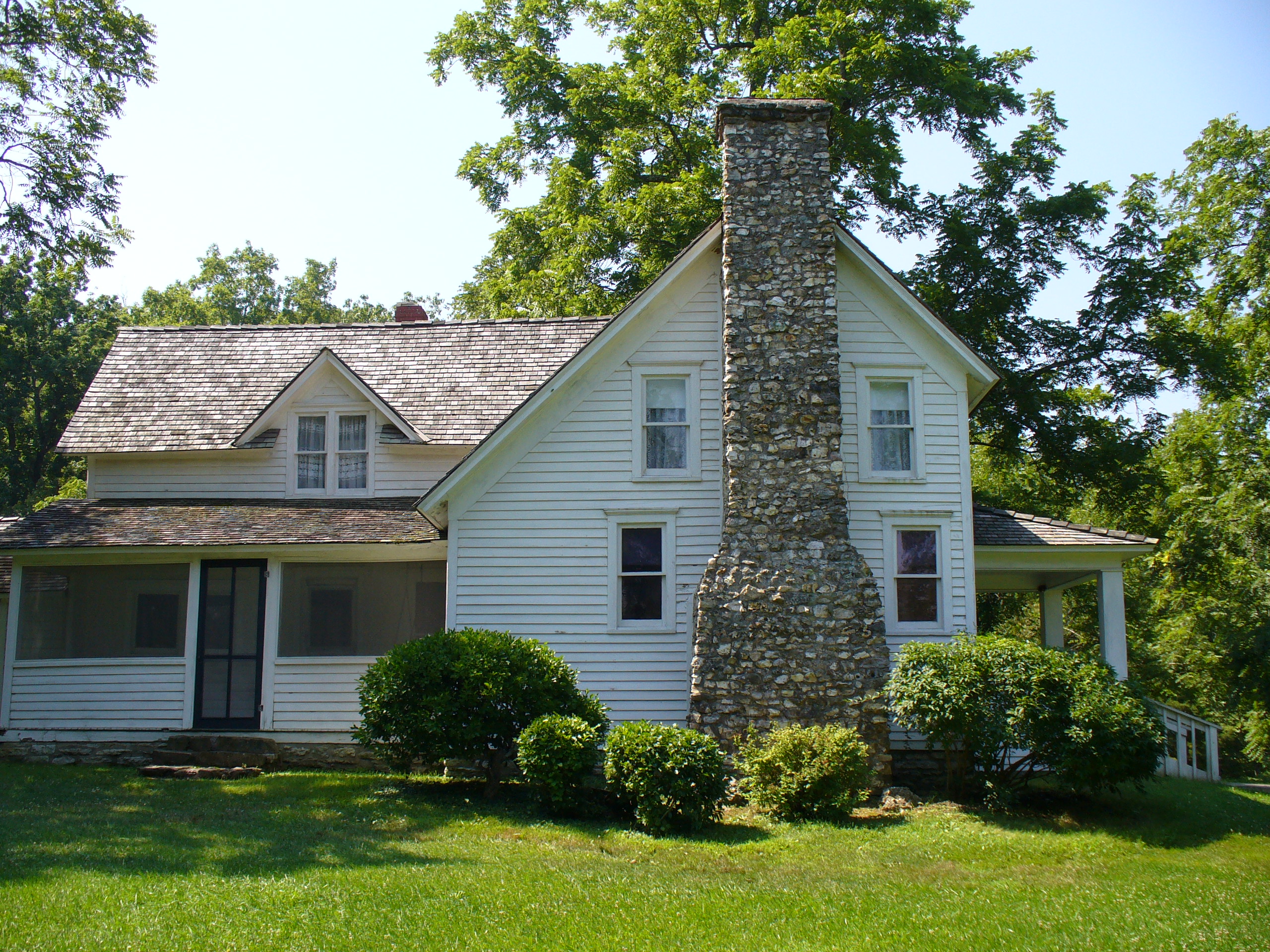When the days are growing longer and the sun shines warm
on the south slopes with the promise of golden hours to come,
my thoughts persist in arranging building plans;
for always in the springtime I want to build a house.
The Wilder farmhouse on Rocky Ridge
Mansfield, Missouri
The desire for changing the surroundings may be inherited from our
wandering forefathers, who always moved their tents to fresh hunting grounds
with the coming of summer; or perhaps mankind, in common with the birds,
has an instinct to build nests when the spring comes. But whatever the reason,
I think most persons share with me the longing to plan and to build
at this season of the year.
But of late, stronger even than my love of planning has been my dissatisfaction
with the usual manner of building, for when flimsy, short-lived materials
are used in construction, the joy of the creation is soon swallowed up
in dismay at the quick process of deterioration and decay.
Wooden buildings need a great deal of repairing, and their demand for
paint is never satisfied. A short time ago a "paint up" campaign was put out
in the papers of the country to promote the preservation of farm buildings.
I would like to take part in a build-up campaign to encourage the use
of building materials that would be more lasting. I would like to see
our farm homes built, not for the present generation only
but for our children and our children's children.
Sometimes I wonder if the home ties would not be stronger
if our homes were built with more of an idea of permanency.
I have a fancy that the farm home should seem to be a product of the soil
where it is reared, a permanent growth, as it were, of conditions surrounding it
wherever this is possible; and nothing gives this effect more than a house built
from the rocks from the fields. Such a house, well built, will last for generations.
Cement is another material of which is lasting and beautiful buildings may be
made. Even the common earth, the soil beneath our feet, can be used as
building material and will last for hundreds of years.
"The rocks from the field" included these embedded ancient treasures dug from
the soil on the farm property, which Almanzo Wilder included in creating
the beautiful stone chimney for the house on Rocky Ridge.
Tamped earth is one of the very oldest of building materials. In New Mexico
and Arizona are walls made of it that are 4,000 years old, and it is still being
used in various parts of the world. This tamped earth is not adobe, but, a
mixture of either sand or clay with loam. It is used dry and must be tamped
down in the forms until it rings. Treated in this way, it becomes
harder with the passing years.
Because of the excessive cost of the usual building materials, the use of earth
in this manner has been revived in England and is proving very successful.
In various localities in our own country some experimenting would
be necessary to determine the best mixture of the loam.
A house planned with loving thought and carefully built of any of these
lasting materials would be a much better monument to one's memory than
a costly stone in a cemetery, because it would be their embodied idea and
the work of their hands, an expression of the mind and soul of the builder.
I shall never forget a drive through a beautiful residence section of a
Missouri town. The gentleman who accompanied me was a stonemason
and builder. House after house that we passed, he told me he had built.
Stone fences with beautiful gateways were the work of his hands.
Calling my attention to a fine house, he said, "I build that house
twenty years ago and see how well and true it stands."
Some of the fences had been built for twenty, some for fifteen, and some
for ten years and were still perfect, not a stone loosened nor settled.
He was very proud of his good work, as he had every reason to be.
"There," said he, "are my monuments. They will last long, long after I am gone."
Almanzo and Laura Wilder in their later years
at Rocky Ridge farm.
"My Dream House"
(March 1920)
Laura Ingalls Wilder
(1867-1957)
Prolific American author and Pioneer girl.
From the book, "Little House In The Ozarks
A Laura Ingalls Wilder Sampler
The Rediscovered Writings
Laura Ingalls Wilder
Edited by Stephen W. Hines
Guidepost Edition
(1991)




No comments:
Post a Comment